Earn points when you:
Blue-and-white Tea Trays
- 7 Chinese Tea
Product Filters
Filter by Category
Filter by Pu-erh Type
Filter by Type
Filter by Taste
Filter by Origin
Filter by Caffeine Level
Filter by Leaf Form
Filter by Brand
Filter by Colour
Filter by Material
Filter by Number of Pieces
Filter by Colour
Filter by Material
Filter by Size
Filter by Colour
Filter by Material
Filter by Size
Filter by Material
Filter by Size
Filter by Colour
Filter by Material
Filter by Origin
7 Products

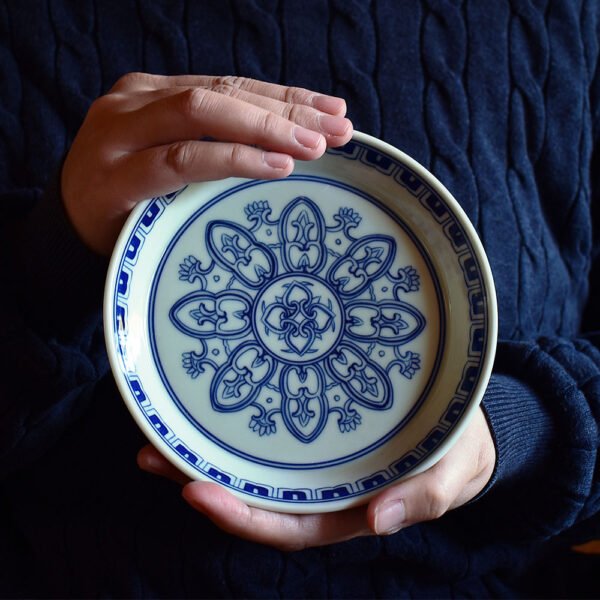

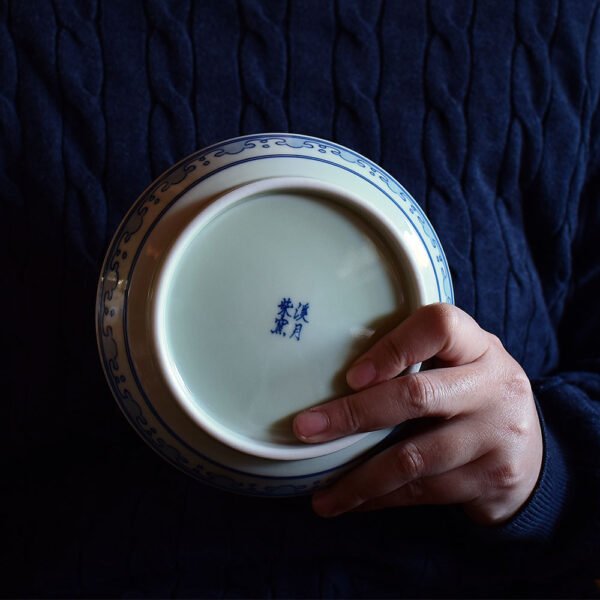 $195.99
$195.99This tea tray is completely handmade and hand-painted. The pattern featured is called “Bao Xiang” in Chinese, which is a traditional decorative motif representing one of the auspicious three treasures (Bao Xiang flower, Money tree, and Treasure basin), prevalent during the Sui and Tang dynasties in China. Bao Xiang pattern is also known as ‘Bao Xian Hua’ or ‘Bao Lian Hua’. Its lines are clear, and the colour is serene and antique. The Bao Xiang pattern design of this teaware is neat, and complex but not messy, and the whole picture of it is full and rich in details.
In Chinese culture, the Bao Xiang pattern symbolizes auspiciousness and happiness, representing people’s aspirations for happiness. It is widely popular in the decoration of silk brocade, bronze mirrors, and porcelain, showcasing people’s pursuit of a better life.
This tea tray features smooth and concise curves, combining the unique beauty of the Bao Xiang pattern, creating a visually appealing and enjoyable tea-drinking experience.



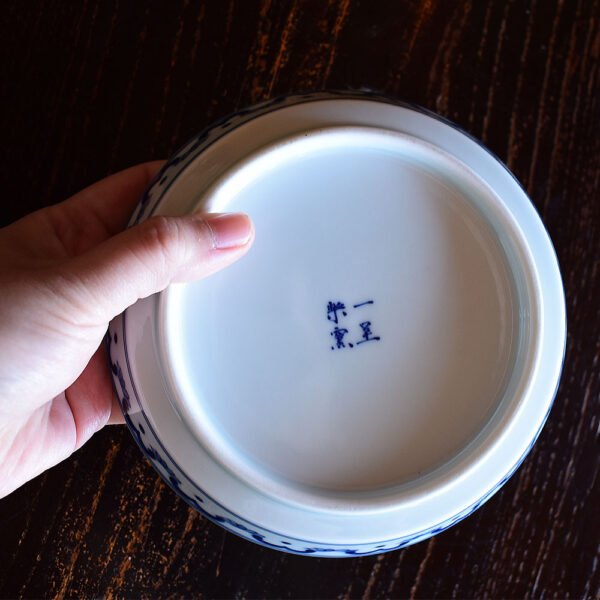 $189.99
$189.99This tea tray is completely handmade and hand-painted. The pattern featured is called “Bao Xiang” in Chinese, which is a traditional decorative motif representing one of the auspicious three treasures (Bao Xiang flower, Money tree, and Treasure basin), prevalent during the Sui and Tang dynasties in China. Bao Xiang pattern is also known as ‘Bao Xian Hua’ or ‘Bao Lian Hua’. Its lines are clear, and the colour is serene and antique. The Bao Xiang pattern design of this teaware is neat, and complex but not messy, and the whole picture of it is full and rich in details.
In Chinese culture, the Bao Xiang pattern symbolizes auspiciousness and happiness, representing people’s aspirations for happiness. It is widely popular in the decoration of silk brocade, bronze mirrors, and porcelain, showcasing people’s pursuit of a better life.
This tea tray features smooth and concise curves, combining the unique beauty of the Bao Xiang pattern, creating a visually appealing and enjoyable tea-drinking experience.

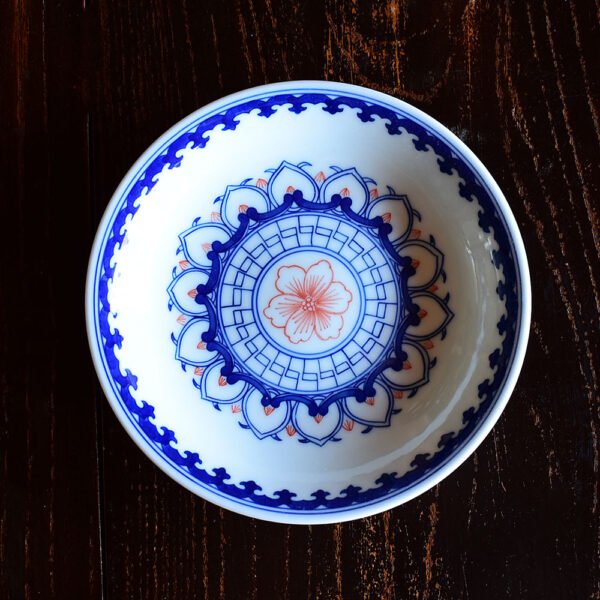

 $229.99
$229.99This tea tray is completely handmade and hand-painted. The special craft used in this teaware includes Blue and white underglaze colour and underglaze red.
The pattern featured is called “Bao Xiang” in Chinese, which is a traditional decorative motif representing one of the auspicious three treasures (Bao Xiang flower, Money tree, and Treasure basin), prevalent during the Sui and Tang dynasties in China. Bao Xiang pattern is also known as ‘Bao Xian Hua’ or ‘Bao Lian Hua’. Its lines are clear, and the colour is serene and antique. The Bao Xiang pattern design of this teaware is neat, and complex but not messy, and the whole picture of it is full and rich in details.
In Chinese culture, the Bao Xiang pattern symbolizes auspiciousness and happiness, representing people’s aspirations for happiness. It is widely popular in the decoration of silk brocade, bronze mirrors, and porcelain, showcasing people’s pursuit of a better life.
This tea tray features smooth and concise curves, combining the unique beauty of the Bao Xiang pattern, creating a visually appealing and enjoyable tea-drinking experience. The blue and red underglaze colours complement each other and create a beautiful radiance.

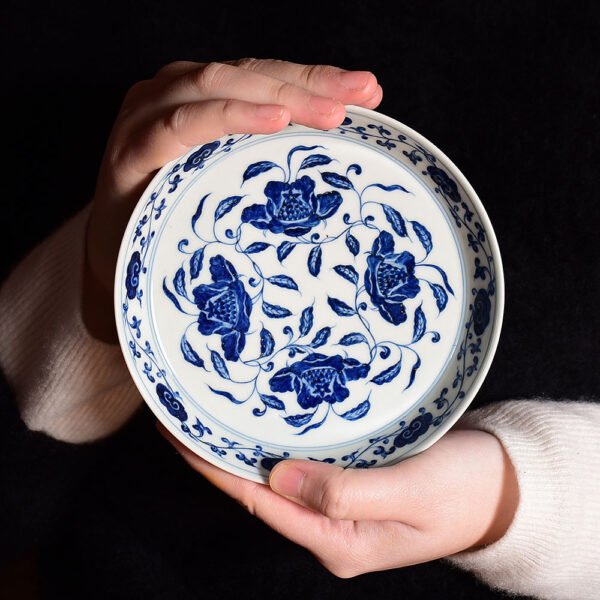

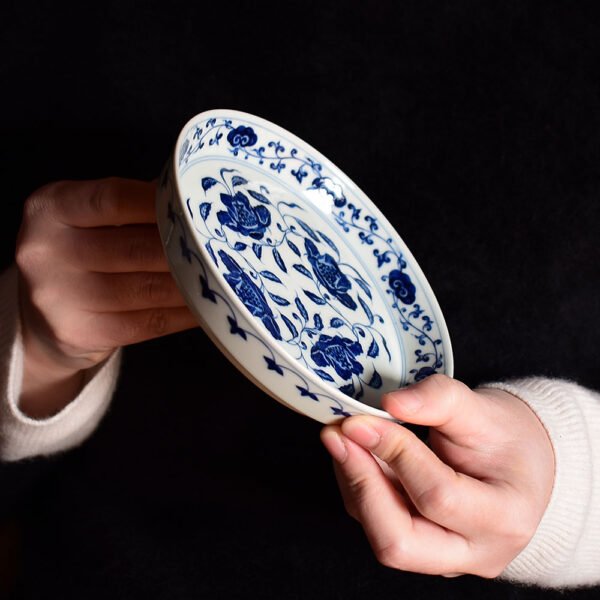 $519.99
$519.99This tea tray is crafted with antique-style clay and meticulously made using underglaze blue techniques. Its delicate brushwork, subtle tin speckles, and warm, solid texture unique to antique-style clay imbue this tea tray with an aura of classical elegance and exquisite beauty.
The decorative pattern on this tea tray features camellia flowers, adorned with Ruyi motifs on the sides. In ancient China, camellia flowers held rich symbolism and meaning. Firstly, camellia flowers symbolize resilience. As one of the few flowers that bloom in winter, camellias demonstrate remarkable endurance and can bloom independently even in the harsh cold. Therefore, camellias represent tenacity and the need for unwavering perseverance to achieve success. Secondly, camellias also symbolize love. With their vibrant colours and blossoms resembling smiling lips, camellias are not only beautiful but also convey passion. They are often used to express love, symbolizing the warmth and beauty of romantic affection. Lastly, camellias signify purity. Their simple coloration, free from the complexity and flamboyance of other flowers, makes them a symbol of purity and freshness, representing a pure and innocent heart.
The Ruyi motifs on the sides of this tea tray also carry auspicious meanings. The Ruyi symbolizes auspiciousness and good fortune. Its rounded and flawless form embodies blessings, satisfaction, and wishes fulfilled. Underneath its graceful appearance, it holds profound significance, representing the auspicious and delightful ideals of good fortune and contentment.
Expect those two traditional patterns, the beautiful tin speckles on the porcelain further enhance its unique charm. The formation of tin spots on Yuan blue and white is due to the high content of iron elements in local parts of the blue pigment. After reaching saturation in the high-temperature glaze solution and cooling down, the iron elements in the supersaturated part start to precipitate. If the iron content of the blue pigment is higher and the cooling rate is appropriate, tin spots are more likely to appear on the surface of the ware.
In addition to firing and materials, the formation of tin spots also involves the factor of glaze material. During the painting process, tin spots can also be formed due to the accumulation of blue pigment. Tin spots are more likely to appear on the surface of the ware at the intersections and the starting and ending points of brushstrokes. The formation of tin spots can be said to be a natural creation or an artificial decoration.
The body of this tea tray has a smooth and lustrous texture, with underglaze blue patterns that appear vivid and lifelike. The subtle tin speckles add a touch of nostalgia and natural beauty, exuding an old-world charm. Every brushstroke of the underglaze blue design is enchanting and vibrant. This beautiful blue-and-white tea tray not only embellishes your tea setting but also embodies the continuation of ancient culture and the expression of aesthetics. It allows you to immerse yourself in a graceful artistic atmosphere while enjoying your tea.



 $945.99
$945.99The style of this super beautiful tea tray is Ming, using the underglaze blue technique, and entirely handcrafted and hand painted. The pattern features very traditional Chinese patterns including intertwining lotus and ‘Ba Bao’.
The “Ba Bao,” also known as the “Buddhist Eight Treasures” or “Eight Auspicious Treasures,” represent eight auspicious objects symbolizing the power of Buddhism. These symbols manifest through the perception of eight types of consciousness: eyes, ears, nose, tongue, body, mind, intellect, and consciousness. They are depicted in various patterns and motifs as decorations in Buddhist art.
During the Qing Dynasty, particularly during the reign of Emperor Qianlong, these eight auspicious symbols were transformed into three-dimensional display items. They were often placed together with ritual vessels in temples. The eight auspicious symbols are abbreviated as follows: Conch Shell, Dharma Wheel, Umbrella, Canopy, Lotus Flower, Vase, Fish, and Endless Knot.
According to Buddhist beliefs, each of the “Eight Auspicious Symbols” has specific symbolic meanings:
- Conch Shell: Represents the auspicious sound of the Dharma, spreading throughout the world as a symbol of good fortune.
- Dharma Wheel: Signifies the endless cycle of Buddhist teachings, symbolizing the continuity of life.
- Umbrella: Symbolizes protection and the ability to shield and safeguard all sentient beings.
- Canopy: Represents the protection of the world and purification of the universe, symbolizing liberation from poverty and illness.
- Lotus Flower: Symbolizes purity and divine birth, representing the rejection of contamination.
- Vase: Represents the perfection of wisdom and fulfillment, symbolizing the achievement of success.
- Fish: Symbolizes liveliness, health, and vitality, serving as a sign of good luck and warding off evil spirits.
- Endless Knot: Represents the interconnectedness and endless nature of all things, symbolizing longevity, and a hundred years of life.
The construction of these symbols focuses on using auspicious objects as the main decorative elements, with their forms often being symmetrical or balanced. Some are complemented by flowing ribbons, while others are placed on a lotus pedestal, creating a harmonious and coherent effect among the different auspicious treasures.
During the Tang and Song Dynasties, the Eight Auspicious Symbols were introduced to the central plains with the spread of Tibetan Buddhism. By the Yuan Dynasty, they began to appear on silk, ceramics, gold, and silver items. In the Ming and Qing Dynasties, the application of the Eight Auspicious Symbols became even more widespread, involving lacquerware, furniture, architectural decorations, and other areas of craftsmanship.
The delicate brushstrokes and intricate detailing of the painting on this tea tray create a distinct sense of aesthetic appeal. The soft and elegant shade of underglaze blue, along with a hint of faint tin glaze, gives it a graceful and ethereal beauty under the light. This tea tray exudes a simple yet elegant charm, reminiscent of the style of imitation Ming, making it truly captivating and irresistible.

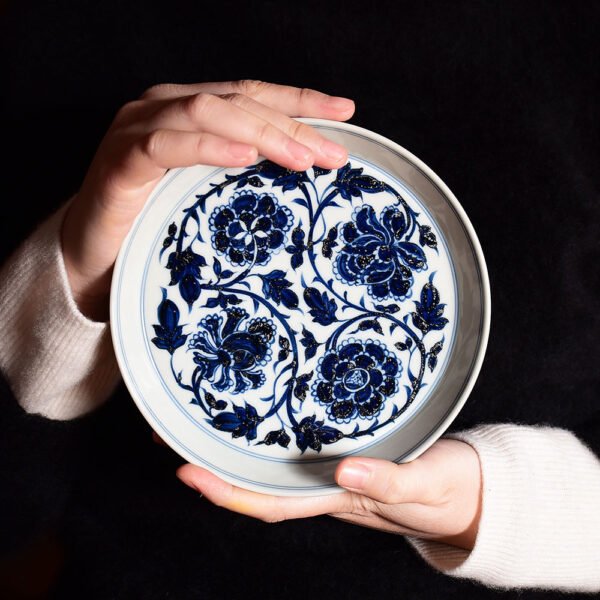

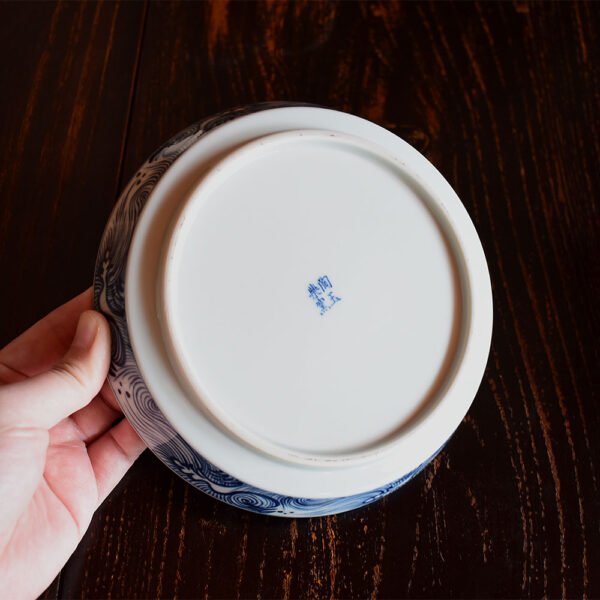 $559.99
$559.99The style of this super beautiful tea tray is Ming, using the underglaze blue technique, and entirely handcrafted and hand painted. The main pattern is the classic design of intertwining Peony branches and traditional waves, while the sides of the tea tray are adorned with wave patterns.
In ancient China, waves naturally referred to the vast ocean, which symbolized gods and immortals and was believed to bestow numerous mystical benefits upon people, such as blessings and longevity. On the other hand, chrysanthemum petal motifs conveyed people’s heartfelt wishes for a blessed, long, and peaceful life.
While peony, one of the beloved traditional patterns in our country, holds a special place in the hearts of the Chinese people with its lush and vibrant appearance and striking colours. As a symbol of our national spirit, it embodies the beautiful aspirations and good wishes for life, symbolizing the prosperity and longevity of the Chinese nation, with a history that stretches far into the past. The intertwined peony, known as “Wanshou Teng” or “Peony with Entwined Branches,” is a traditional auspicious pattern, that represents joyous occasions. Its continuous interlocking structure also conveys the meaning of “endless vitality” or “continuous growth.”
In addition, the beautiful tin spots on the porcelain add even more unique charm to it. The formation of tin spots is due to the high content of iron elements in local parts of the blue pigment. After reaching saturation in the high-temperature glaze solution and cooling down, the iron elements in the supersaturated part start to precipitate. If the iron content of the blue pigment is higher and the cooling rate is appropriate, tin spots are more likely to appear on the surface of the ware.
In addition to firing and materials, the formation of tin spots also involves the factor of glaze material. During the painting process, tin spots can also be formed due to the accumulation of blue pigment. Tin spots are more likely to appear on the surface of the ware at the intersections and the starting and ending points of brushstrokes. The formation of tin spots can be said to be a natural creation or an artificial decoration. These tin glazes not only add a rustic texture to the tea tray but also imbue it with a unique sense of history.
This tea tray exudes a charming style reminiscent of imitating the essence of Yuan Dynasty tea sets.

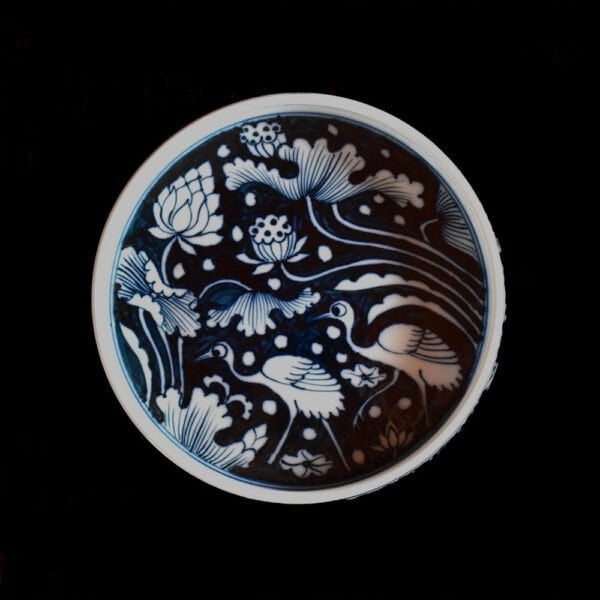

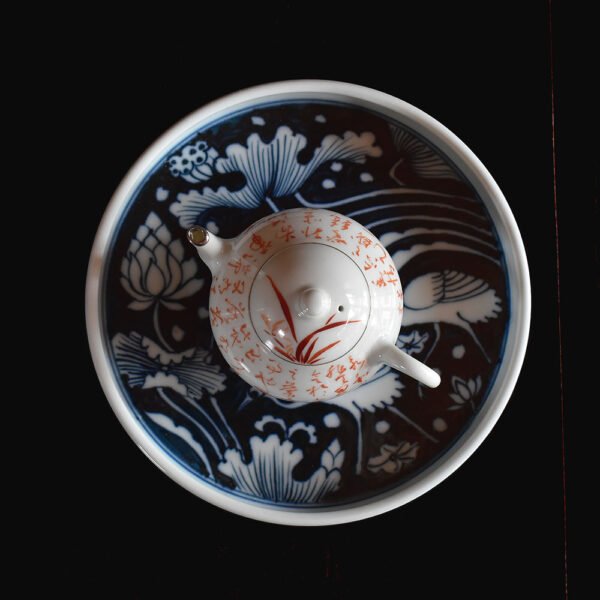 $279.99
$279.99This tea tray is made in the style of the Yuan dynasty blue and white porcelain, completely handmade and hand-painted. The pattern of “一鹭莲科” or “一路连科” in Chinese culture is derived from the beautiful combination of the heron and lotus leaves. As “鹭” (heron) and “路” (path/road) have the same pronunciation, and “莲” (lotus) sounds like “连” (successive/continuous), the name “一路连科” is a play on words that conveys the beautiful meaning of the pattern. In ancient times, successive successful candidates in the imperial examinations were called “连科,” and “一路连科” is a good wish for students to have a smooth career path and achieve success step by step.
For Yuan blue and white porcelain refers to the blue and white porcelain produced during the Yuan dynasty (1271-1368) in China. The Yuan dynasty was an important period in the history of Chinese porcelain and one of the peaks of Chinese porcelain art. As one of the representatives of that era, Yuan blue and white porcelain exhibited unique artistic styles and technical levels. The characteristic of Yuan blue and white is the use of cobalt blue pigment for painting, which is made of cobalt oxide. After firing, the colour is bright and rich, with an extremely high decorative effect. Yuan blue and white porcelain has various shapes, thick and heavy, concise, and fluent lines, and stable and solemn shapes, all made exquisitely.
The evolution of Yuan blue and white is based on the foundation of Tang and Song celadon. Firstly, the glaze colour was improved and innovated. Unique white glaze, eggshell glaze and blue-white glaze were invented to make the glaze crystal clear. Cobalt pigment was imported for glaze colouring. Or using the pigment made from domestic materials.
The formation of tin spots on Yuan blue and white is due to the high content of iron elements in local parts of the blue pigment. After reaching saturation in the high-temperature glaze solution and cooling down, the iron elements in the supersaturated part start to precipitate. If the iron content of the blue pigment is higher and the cooling rate is appropriate, tin spots are more likely to appear on the surface of the ware.
In addition to firing and materials, the formation of tin spots also involves the factor of glaze material. During the painting process, tin spots can also be formed due to the accumulation of blue pigment. Tin spots are more likely to appear on the surface of the ware at the intersections and the starting and ending points of brushstrokes. The formation of tin spots can be said to be a natural creation or an artificial decoration.
This tea tray has a thick body and uses the Su Ma Li Qing glaze material (a kind of blue pigment), with a heavy sense of tin spots, revealing a unique charm of the past era. The entire production process is completed by hand, and every detail has been carefully designed and polished, giving this tea tray a unique artistic charm.




